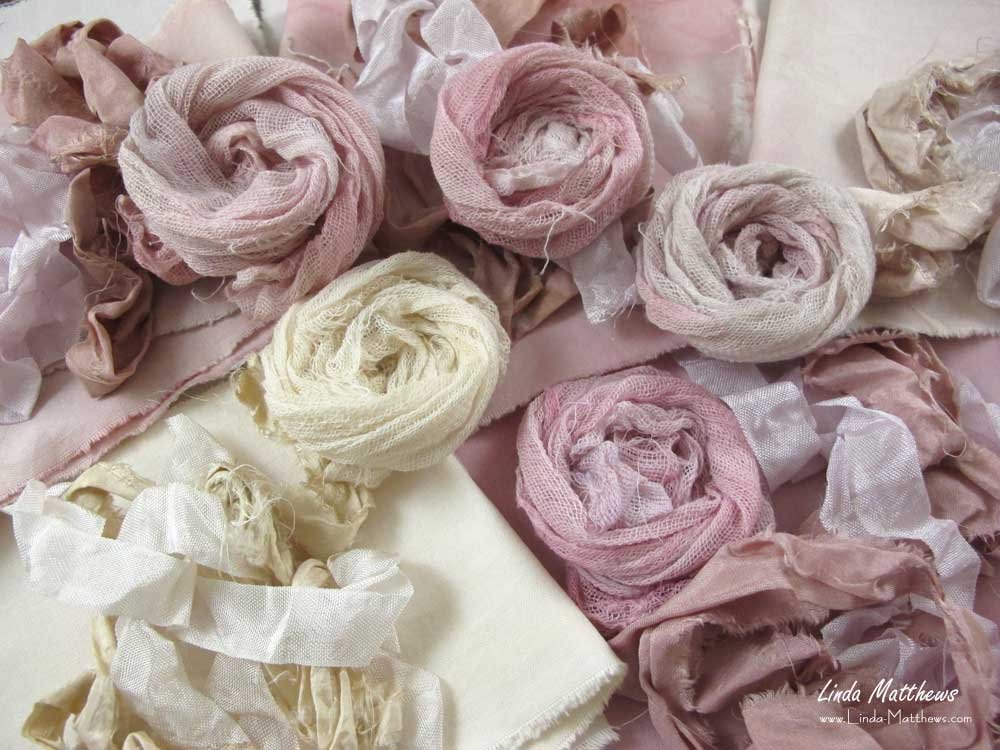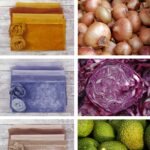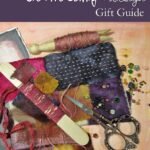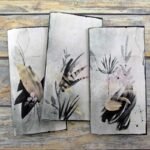With a new year of Creative Art’n’Soul Journaling about to commence on 1st November, this coming year I plan to include additional technique-based art processes for making and painting journal pages, and assembling and embellishing our journals.
Guided by the philosophy of wabi sabi, which is a Japanese aesthetic of finding beauty in that which is imperfect, we’ll use that philosophy both as a guide for designing the pages of our journals, as well as a metaphor for the stories of our lives as we learn to translate them onto the pages of our journals.
One of the processes we’ll be exploring is dyeing fabrics and fibers using natural dyes, as well as rust dyeing. These methods of fabric dyeing can be quite quick and simple, and are the perfect way to create unique fabric that can be used for making journal covers and embellishing the pages of our journals.
Although my preferred method of fabric dyeing is using professional procion dyes which gives you the ability to produce an astounding array of colors and visual texture, it’s certainly fun experimenting with other forms of fabric dyeing. There’s no simpler method of natural dyeing than with tea bags, and in particular, herbal teas. Dyeing fabric and fibers using herbal teas is a great way to get started with natural dyeing because with this method there’s really no way you can go wrong which makes it easy for beginners to successfully produce some lovely hand-dyed fabrics.
I found this sampler box of fruit tea in my cupboard which was the perfect type of tea to use. The box includes raspberry, peach, wild berry, blueberry and black cherry.

I noticed that all of the teas except peach contained very similar ingredients so I assumed that the colors would all be similar – and I was right. After soaking a small sample set of fabric pieces and ribbons in cups of boiling water with a tea bag for several hours, this is the result. The ribbons seemed to soak up most of the color and they turned out lovely, but the fabric was only slightly tinted which was a little disappointing.

So I dyed another set of fabric strips by boiling them for 10 minutes with two teabags, and then letting them cool. The results were much better, and now I have some lovely sets of fabric and ribbon scraps in soft colors of beige to rose, that are all similar but with slightly different shades. Plus it was a bonus that the kitchen smelled so beautiful with all those fruity flavors!
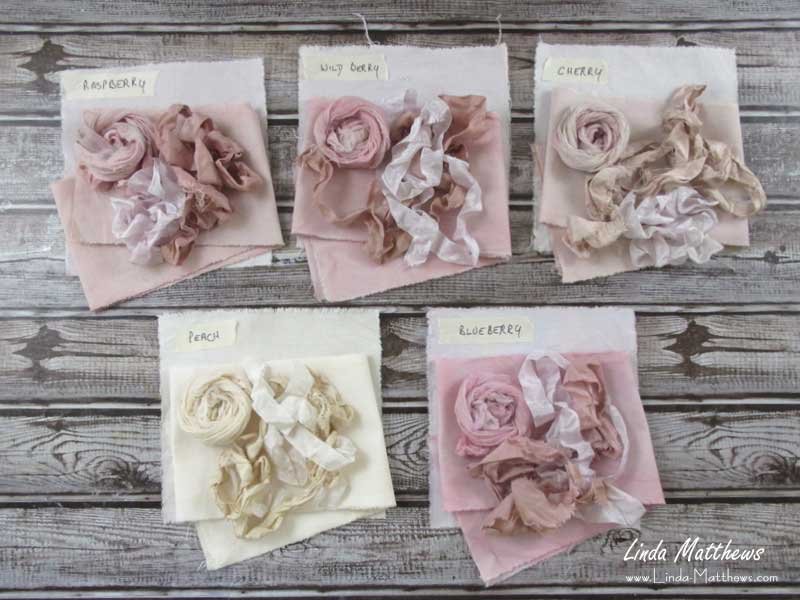
A video showing you how to dye fabrics using herbal tea bags is included with the Transitions Journal video workshop, which is the first in the series of Unraveling the Mystery which will be an exciting year of creative and artful journal-making using simple techniques for creative mixed media and natural dyeing, as well as processes for learning to tell our stories in a completely unique way. You can find all the details here.
